How to Travel Iceland in a Camper Van
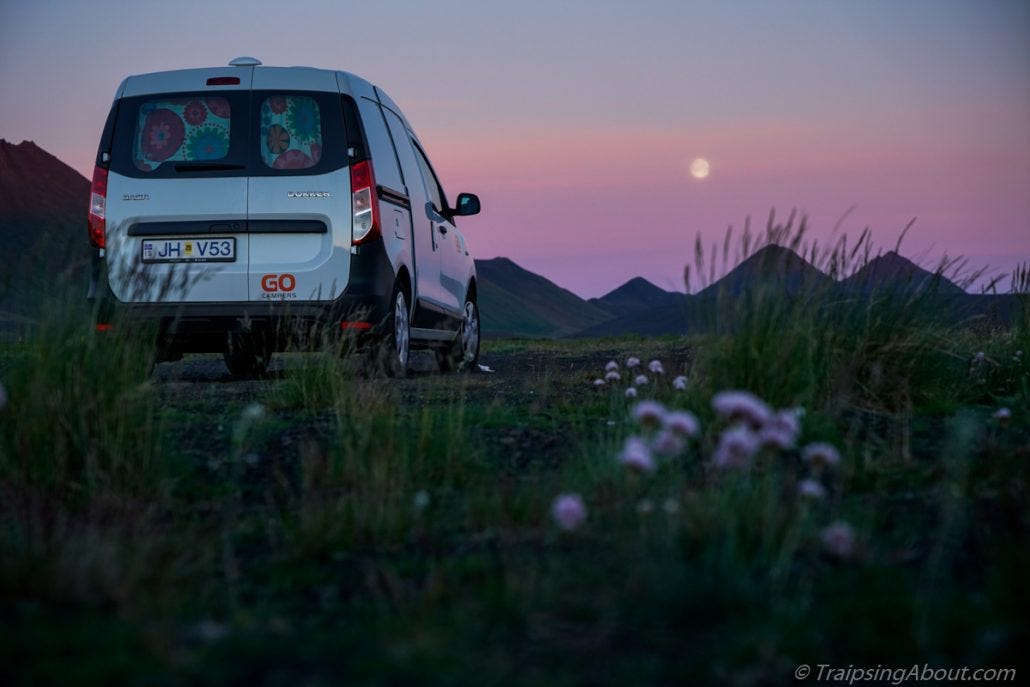
There are many ways to explore Iceland. You can rent a car, bicycle tour, hitchhike, or take the public bus. My hands-down vote, however, is to travel Iceland in a camper van.
As part of a month-long trip in summer 2016, we spent 2.5 weeks exploring the perimeter of the island via van. We followed a counterclockwise loop, nipping off the Ring Road to check out quiet roads whenever possible.
Even in July, the crescendo of tourist season, our camper van created access to areas we otherwise would have skipped. As a way to streamline your travel experience, bask in the brilliant nature of Iceland, and still travel in relative comfort, it’s the way to go! (If you’re worried about finding bathrooms and showers, read on below.)
This post is aimed at helping anyone looking to rent a camper van in Iceland. Whether this is your first time traveling by van or you’re experienced like me and Chelsea, you’ll land ready to rumble.
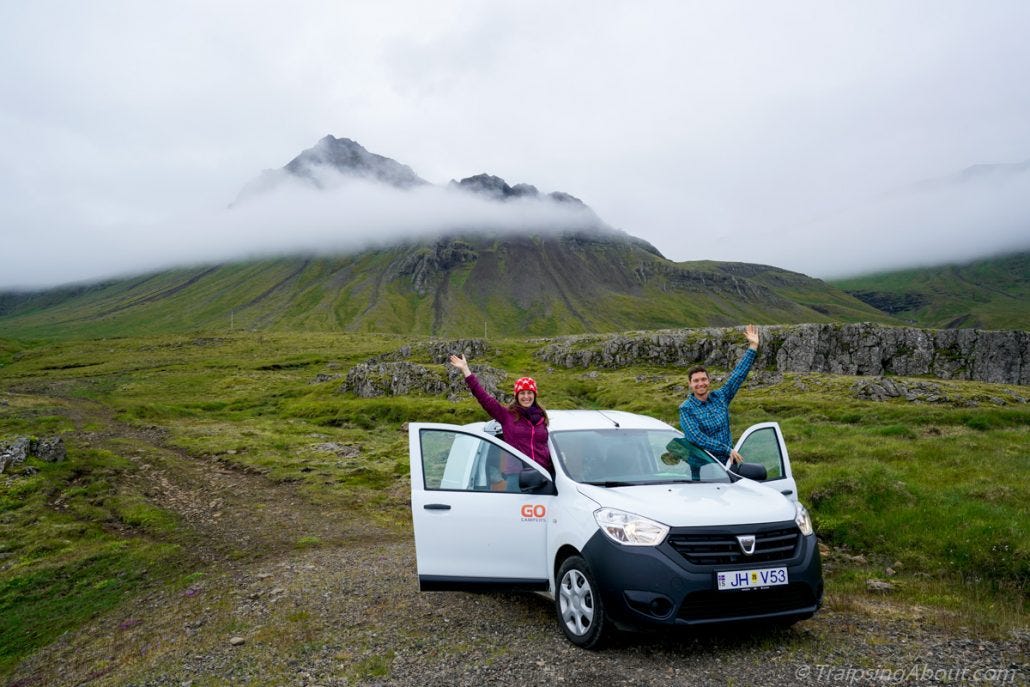
Benefits of Traveling Via Camper Van
We are not fans of planning an entire trip. It always leads to having to pass up fun opportunities. While it's necessary to plan ahead to book a vehicle, a camper van creates an otherwise free-flowing schedule. The cheapest way to tour Iceland is to hitchhike and tent camp along the way, but we are no longer tough enough for such things.
Compared to renting a car and staying in hotel, you’ll save money by renting a van. On top of that, a van also allows you to carry lots of food so you can eat when you are hungry. Given that eating out usually costs at least $25/person, this can potentially save a boatload of money.
Beyond that, you’ll be able to linger in beautiful areas. The flexibility of not needing to stick to polite business hours for arriving at a hotel or a host’s home opens up hours of watching perfect sunsets or hiking late into the day.
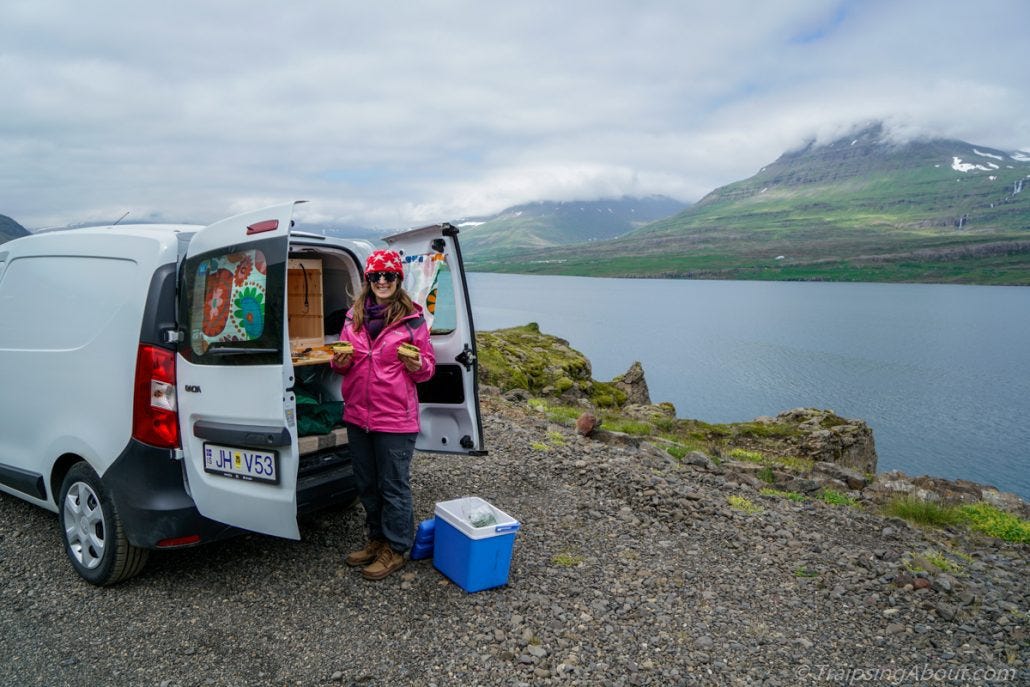
Lunch time! Stop when the view is good and eat.
How to Choose Your Van
We’re experienced van travelers and know what makes for a comfortable vehicle. Unfortunately, most camper options were booked because we decided to head out with little notice. (High season - July and August - requires planning ahead by at least a few months, it seems.)
After contacting six different companies, we rented a simple camper van from the friendly folks at Go Campers. (Kuku Campers and Happy Campers are other solid options, from what I saw.) Their prices were competitive and customer service was great. I also like that their vans also have a small, simple logo instead of a bright, flashy designs on the side.
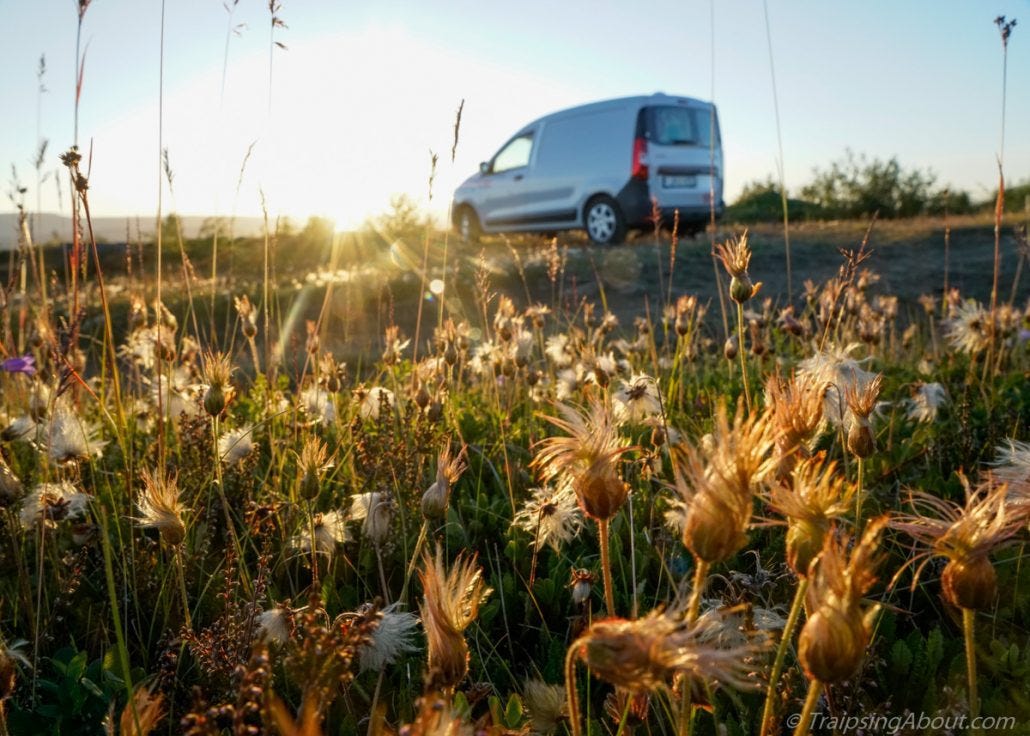
Wildflowers firing away at a camp spot somewhere seeeecret.
From what I saw pricing various companies, a basic camper costs about $100/day in the low season. Add ~25% for high season. (For comparison, a rental car is somewhere around $60-$100/day in high season.) Mid-range campers start closer to $200 and feature amenities like a heater, sink, fridge, and live-in chef (if you ask nicely). We would have gone with a fancier camper, but they were all booked up.
If you aren’t comfortable driving a manual transmission, make sure to let your rental company know! From what I saw, many of campers are manuals, but there are also automatic options that cost a bit more.
Lastly, let’s talk insurance. All companies will try to sell it to you. If you don’t have coverage, be warned that there is gravel on ALL roads (paved or not) and you may come back with a few chips. When the pavement runs out, you'll be warned with the sign Malbik Endar. (It translates as "Norse God of Potholes Attacked Here.")
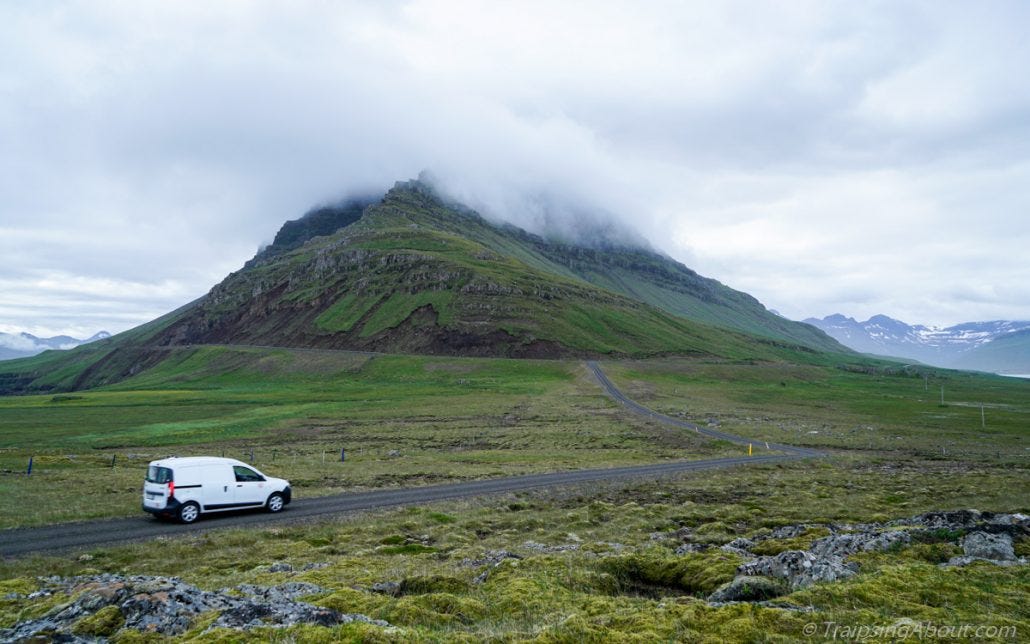
Open roads...
How to Not Smell Like a Dirty Dirtbagger (aka Staying Clean)
Let’s get this out of the way: Stop worrying about finding frequent showers or toilets (WC, as they say here). It is easy to find a shower and bathroom in almost every town. That said, there are no rest stops, but gas stations, restaurants, and grocery stores all have easy-access bathrooms. Worse-case, in the more remote areas you may need to scurry off the road to find a nice sheltering rock...
One option for staying clean is to jump in a frozen fjord. PFFFFT. Go with one of the signature elements of Iceland: Geothermically-heated pools in almost any town, no matter the population. For ~$5, you get access to a shower and the soaking pools, not to mention the occasional sauna and gym facilities. Our favorites: overlooking the ocean at Hofsós in the north, a great fjord view in Patreksfjordur, and the seaside ones in Drangsnes.
I mentioned this in my previous post and will restate it: before jumping in the pool, you MUST take a real shower. (Don’t worry, showers aren’t co-ed, and some places even have private stalls.) Take off your swimsuit, scrub your dirty parts per the handy instructional diagrams, and then put your suit back on. Nudity in the pools is not a thing here, so don’t plan on airing your junk for all to see unless you want to be the seriously weird foreigner. (And probably get kicked out.)
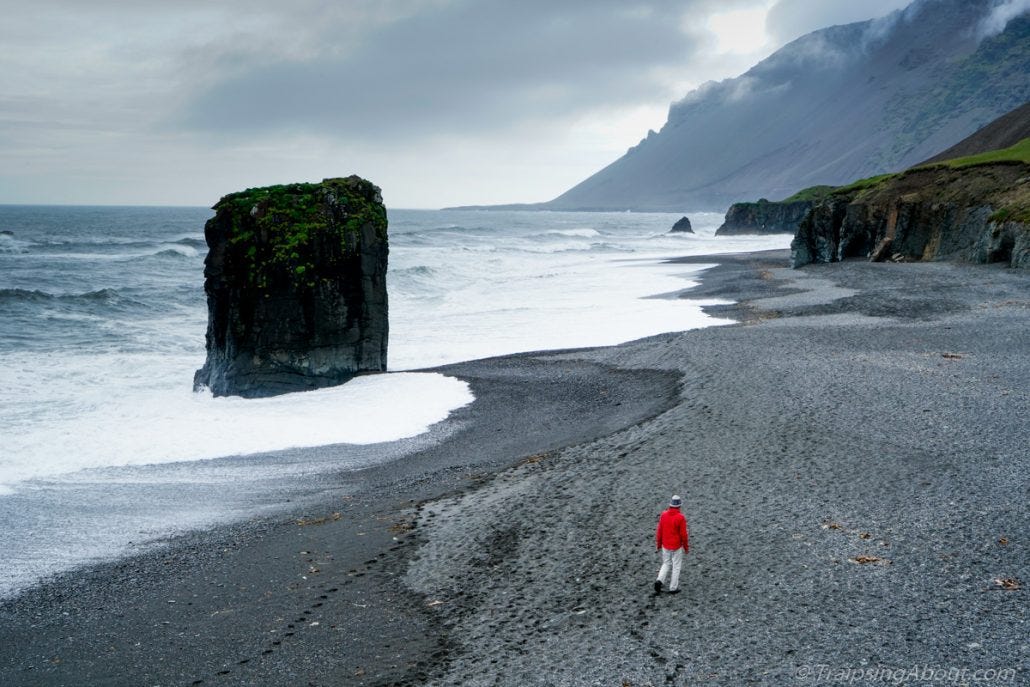
Sorry, no pool pics. How about a black sand beach instead?
How Much Time Is Needed For My Trip and Where Should I Go?
If you’re cruising the 870 mile Ring Road, 10 days seems to be the accepted won’t-crush-your-spirit-and-go-home-exhausted trip duration. Clockwise or counterclockwise - who cares? Since it’s a circle, I vote for choosing where the weather is best and heading that way.
We tend to travel slower than many people. Our goal for this trip was less than 2-3 hours each day driving. In 2.5 weeks, we were able to visit almost every area of the island without feeling rushed.
If you want the quiet solitude and scenery of many of the pictures in this post, head to the eastern or western fjords. (The western were our favorites.) Lots of wild camping, fewer people (less than 20% of tourists in Iceland go to the west fjords), and stunning scenery. As soon as you get off the Ring Road, you'll see less traffic and tour buses. Always a positive in my opinion!
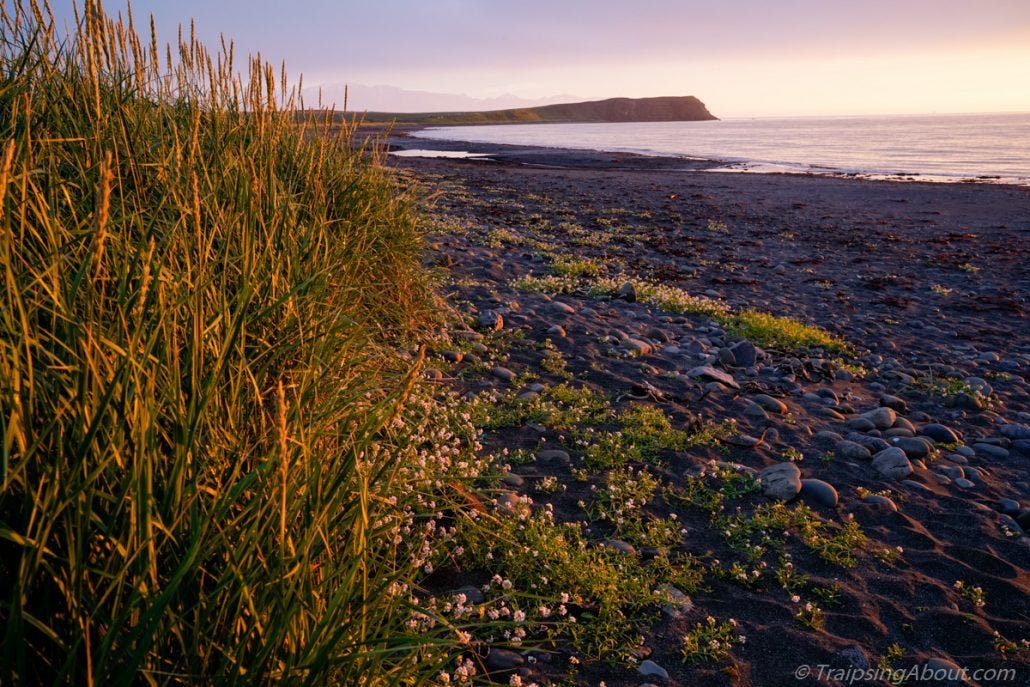
A perfect beach camp spot in the north near Husavik.
Where to Sleep
There are well-signed campgrounds everywhere in Iceland, often right in town. Any map will show you where they are. Most feature cooking, shower, and laundry facilities, plus water refill opportunities. They cost about $10/person.
Until recently, the Swedish idea of Allmansrätten was the law of the land. (Camp anywhere for one night.) Since July 1, 2016, this is no longer legal in Iceland, and it's probably a good thing with tourism BOOMING. If you want to camp on someone's property, you need to find the landowner and ask them. I vote for just staying in campgrounds. (To be clear, we wild camped all but three nights and found out about the new law only upon returning our camper. Ooooops.)
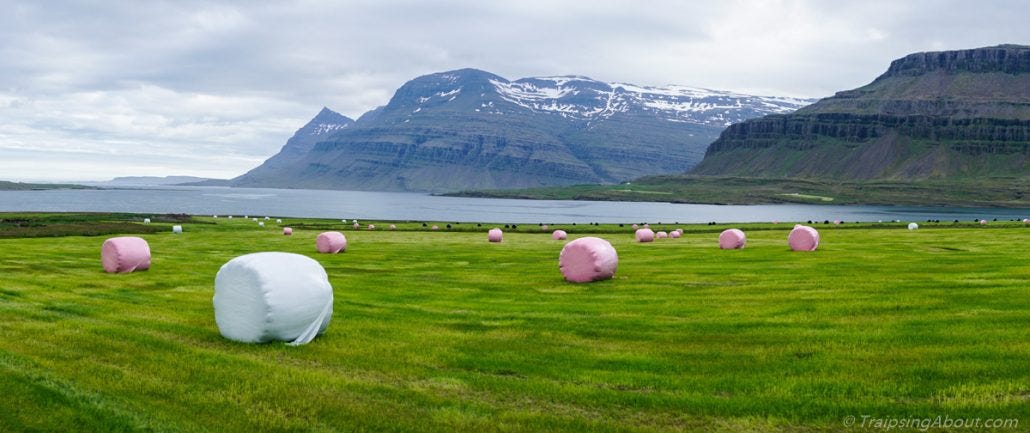
Don't camp on private land without asking! We simply admired these newly-wrapped hay bales in a freshly mowed field in the east fjords.
Staying Connected
Iceland’s affordable internet and cellphone access beats the pants off Europe and North America. Since I work remotely while we travel, staying connected is a priority. It is SO easy here. Even if you are on vacation and checked out of work, it could come in handy to access directions, find things to do/see, check business hours and locations, research an interesting topic or just make a phone call.
There is fast, reliable cell coverage almost everywhere in Iceland. It’s also super cheap. Using my unlocked iPhone, I simply picked up a Nova SIM card at the duty-free store at the airport and added data to it. For $40, I got 50 GB of data (1/12 the cost of data in the U.S.).
Since you’ll likely have a number of items that require charging (headlamp, phone, camera, computer, etc), I recommend bringing some kind of rechargeable battery pack with multiple USB ports on it like this one. Then you can plug that into the inverter while you drive and charge multiple items.
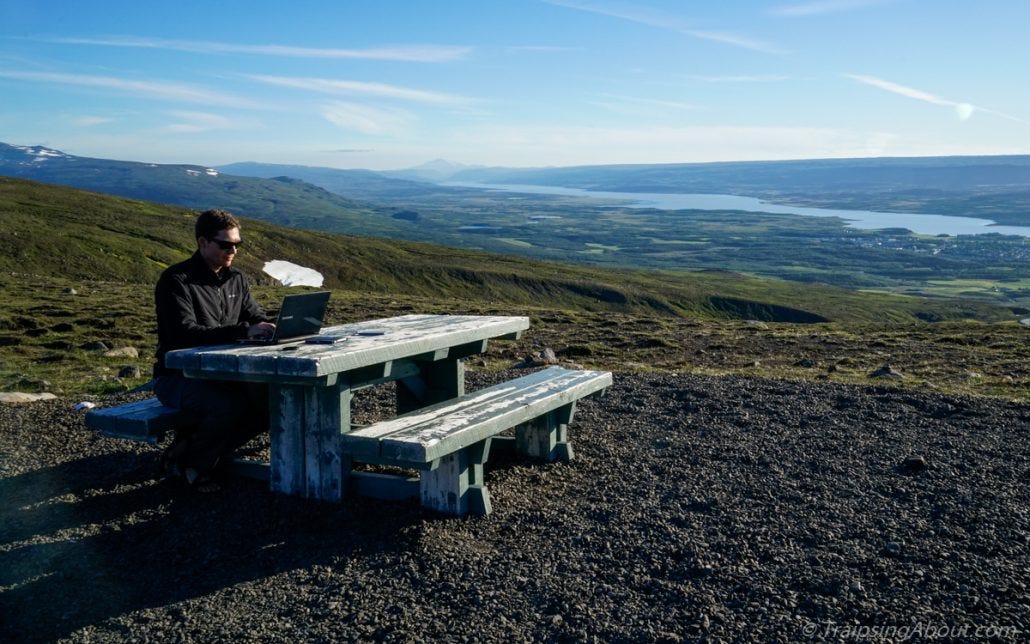
Plugged into my hotspot checking on work at one of the best offices I could ask for. (Shot not staged - I wrote an offer for a new employee here!)
Pack Efficiently
It may be tempting to bring a ton of gear. “Hey, we’re car camping, and I use that inflatable couch sometimes…” Don’t do it!
In the smaller vans, depending on the design, you shuffle your gear from the rear sleeping compartment up to the front seats when you want to lay down. Pack everything in easy-to-access duffel bags or small suitcases. Thank me when you quickly find your hat before a hike instead of unpacking the entire contents of your van.
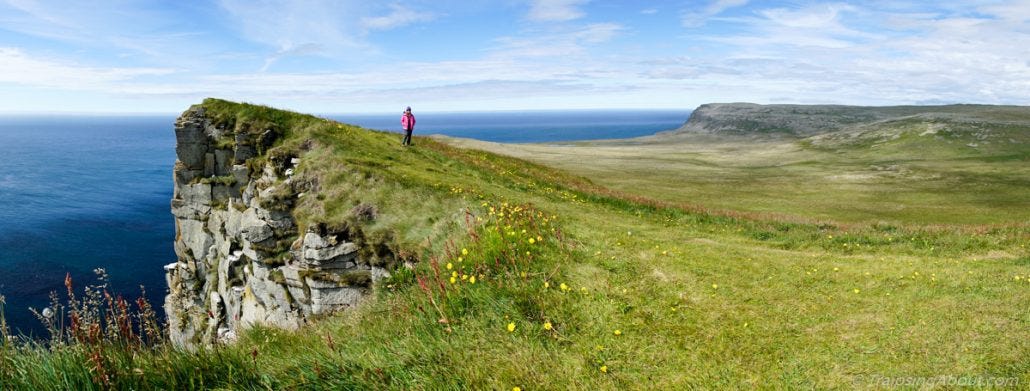
Speaking of hiking, check out the cliffs of Latrabjarg, the western-most point in Europe.
Must-Have Items
To help me sleep during always-light summer nights, a sleep mask rocked my world. Ear plugs are always helpful for camping, and a thermos for hot tea or coffee on-the-go is handy and a zero waste option.
Chelsea wished she had brought her old-school hot water bottle to keep her warm at night. Consider bringing something like this if you sleep cold and your camper van doesn’t have a heater.
Metal water bottles are great for avoiding buying bottled water, especially since you can fill up at any waterfall with delicious, cold snow-melt water. Most gas stations have fill areas too, or a restaurant will help you out. (We found Icelanders so nice and helpful.)
We always travel with a couple of reusable bags for groceries/changes of clothing/dirty laundry/etc and they were always in use. Lastly, we also travel with wet wipes, a handy hygiene improvement device. These are available at prices you’re used to for purchase at any grocery store in Iceland.
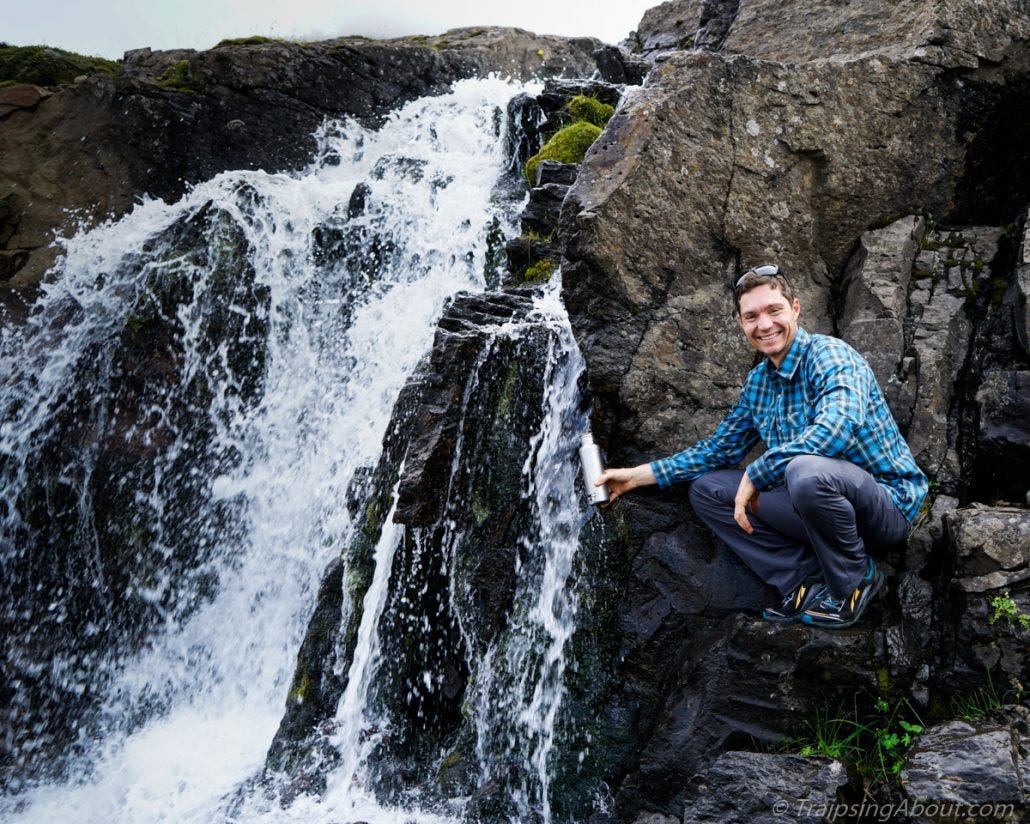
Fresh water everywhere!
Bring Warm Clothing
Pack light, but keep in mind you’re at the Arctic Circle. Bring base layers, insulating layers, windbreaking layers, a puffy jacket, high-quality rain jacket, warm socks, lined hat with great ear coverage, gloves, waterproof shoes and so on. The wind in Iceland cuts hard and you are almost guaranteed to do some exploring in the rain. We’ve also had a fair number of beautiful sunny days, to be clear. A 20 degree F sleeping bag will likely work, though Chelsea has had a few cold nights despite sleeping in all her layers in our heaterless camper.
I want to emphasize that waterproof shoes are key. I brought running shoes as well, but my feet were often a bit damp if I wore them on a hike through mossy or grassy areas. Even if it’s not actually raining, the trails are likely mushy or lined with wet foilage.
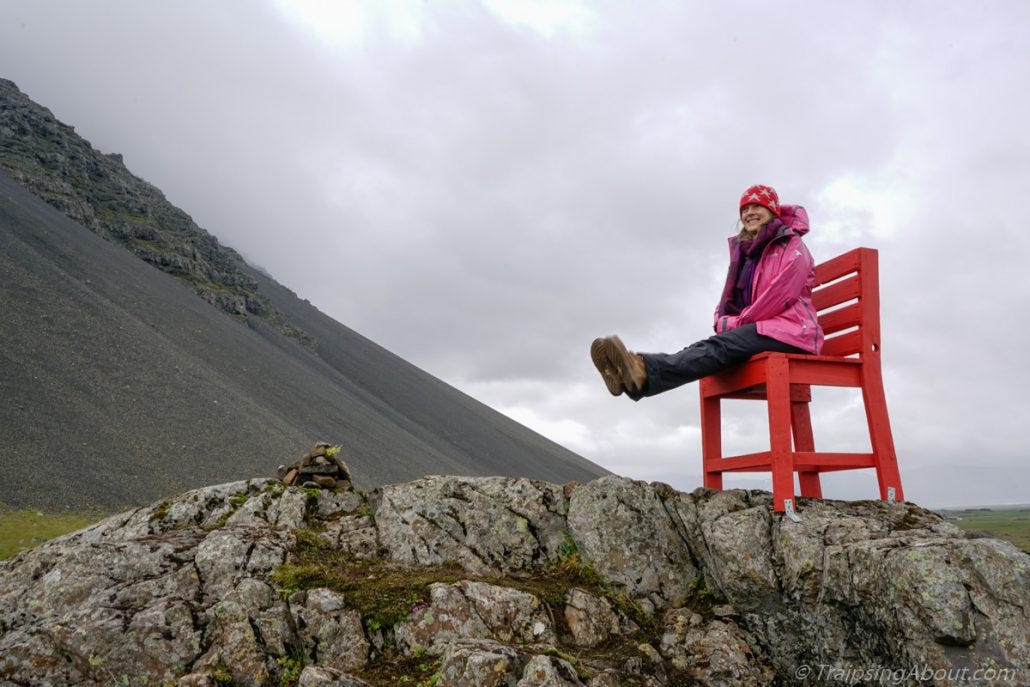
Chelsea bundled up in a random giant chair by the side of the road.
Check Van Supplies Before Leaving
You may feel the urge to floor it out of town in a jetlagged haze the second you get your camper keys. Resist that urge and go through the van’s kitchen and camp equipment to make sure you have everything you’ll need.
Knife? Cutting board? Lids for the pots? Scrub brush for dishes? Water jug? Inverter to charge your gear? Camp chairs? Make sure you leave with everything you were expecting. We hit the road with a van that was missing a knife and ended up having to buy one along the way.
Also, know how to access your spare tire. (Every car manual shows you how.) We picked up a shard of gravel and wound up with a flat in the middle of nowhere. It was an easy change for me, but if you aren’t comfortable changing a tire, you might want to prep yourself in advance. Goodyear and Firestone have stores in the bigger cities and fixed our flat for about $20.
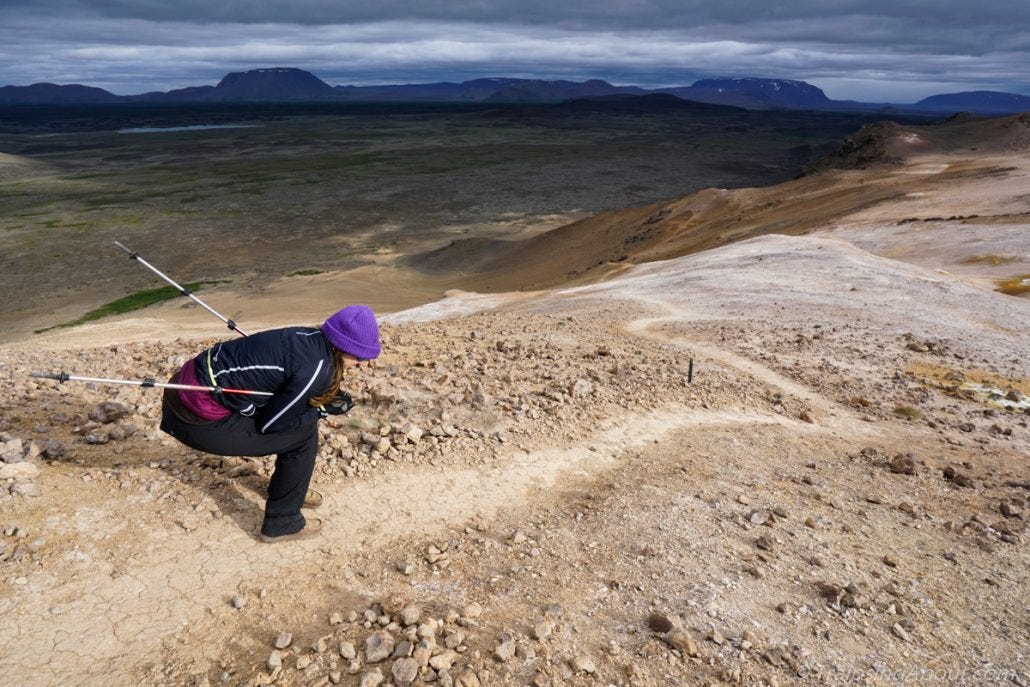
Don't forget your ski gear. We TOTALLY mistimed ski season...
Food Food Food!
Iceland may toe the Arctic Circle, but people here don’t just eat dried fish. Grocery stores are well-stocked and easy to find, at least in the big cities. Even in far-flung corners and tiny stores, we were pleasantly surprised to find some organic and vegan options.
Netto was our favorite store, but their discount brand Bonus is another good option for staples. Fruit and vegetables (many organic) are abundant, including grapes, blueberries and mangoes.
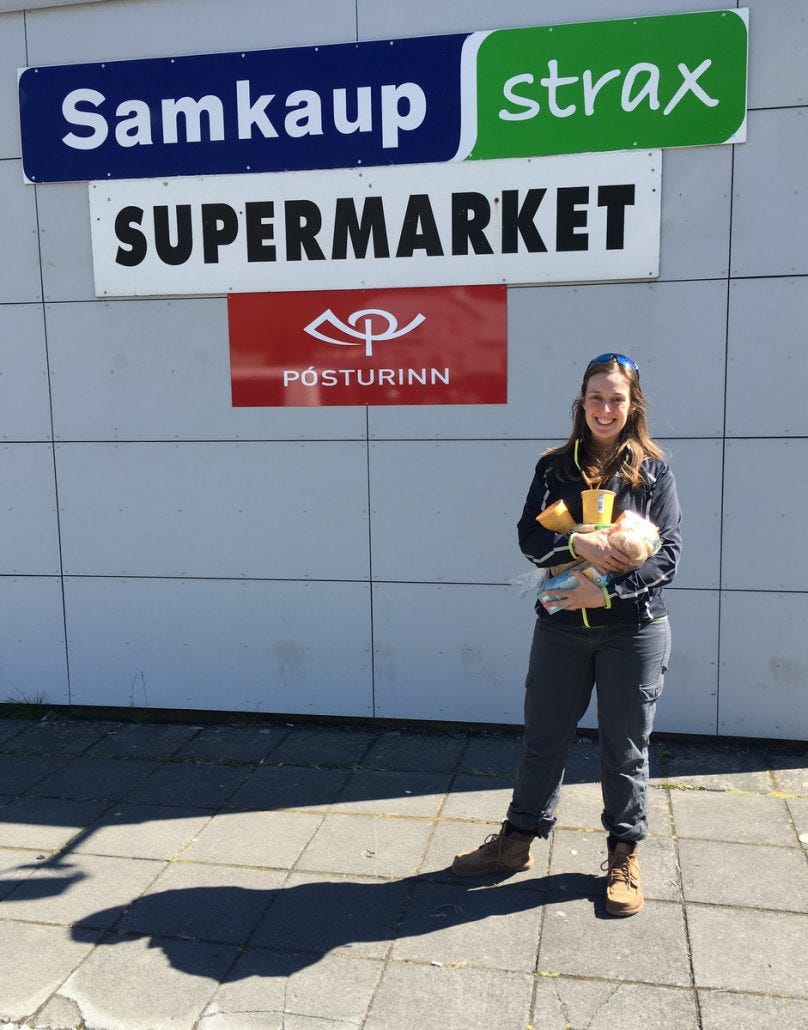
Stocking up in the tiny town of Seydisfjordur.
To read labels, Google Translate is fantastic. (Download the offline version before you arrive.) Since we don’t eat any animal products, we use it to translate ingredient lists. That said, we found that many labels were in English, not to mention there often was a great selection of nondairy milks and cheeses and vegan meats. (Even soy yogurt in some places.) As a bonus, a vegan lifestyle mitigated how ineffective our cooler was since plants don’t spoil very quickly.
Lastly, if you’re buying alcohol for your trip, grab it at the airport when you arrive to avoid paying the luxury tax. We don’t drink much at all (except for kombucha!), but did snag a couple bottles of liquor for friends in Reykyavik.
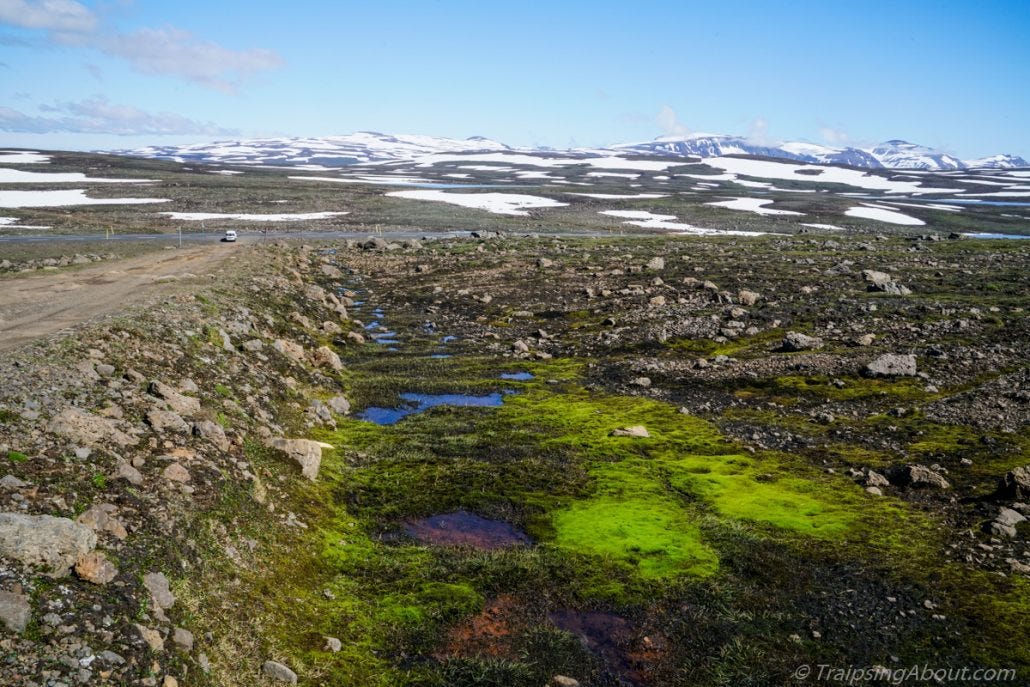
Fill the van with food so you can hang out in places like this! Can you spot the van?
Dealing with Basics: Laundry, Ice
Laundry is offered for about $10 (wash/dry) at most campgrounds. The frequently overcast skies made it tough to dry things, so dryers were nice! Since 100% of Iceland's power comes from renewable energy, you can feel good about supporting the local economy.
Note: Many dryers in Iceland use a water reservoir drawer at the top of the dryer instead of a plumbing drain. If you don’t empty this when you start the cycle, your clothes will NEVER dry.
Totally random, but finding ice for our cooler was surprisingly difficult at times. Big cities have bagged ice, but in smaller areas you’ll need to ask at gas stations or restaurants for them to bag some ice. Apparently people don’t travel with coolers? The grocery store Bonus consistently had it, but isn’t everywhere.
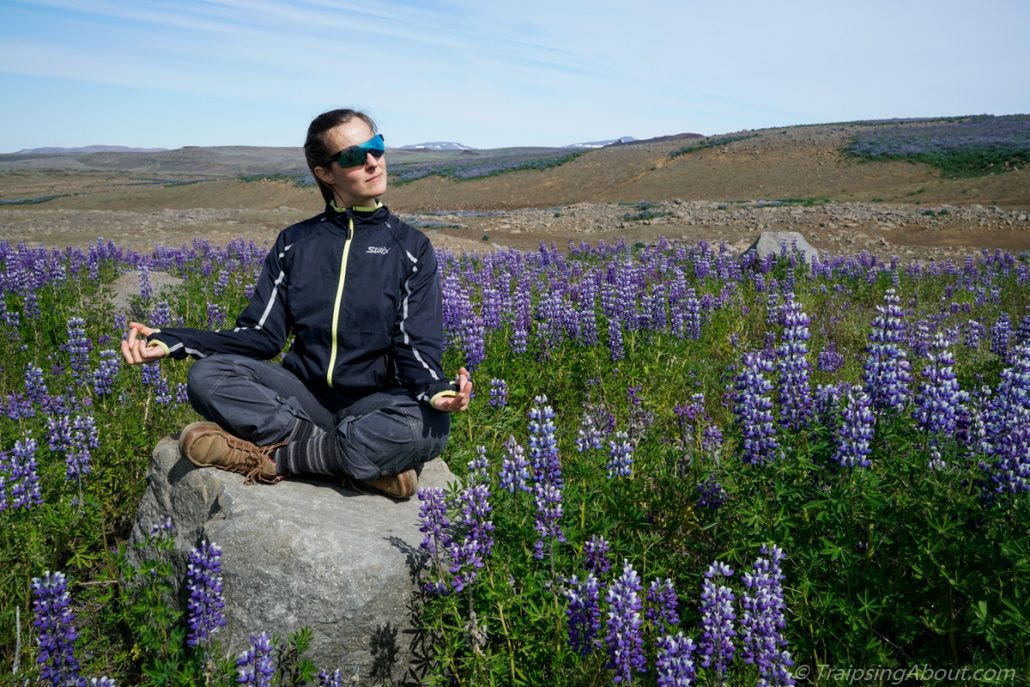
We simply meditate in a sea of lupin instead of doing laundry. It's advanced, I know.
****
Get After It!
Whaaaat else? Nothing at all! Rent that van, plan your trip, and have a kickass time.
If a van is in your budget and you want to maximize your flexibility for your trip to Iceland, I can’t recommend it enough. If anyone has questions, please fire away in the comments and I’ll do my best to help you out. Rented a camper van recently and have feedback? Help future travelers out by posting a comment.
*Thanks to Go Campers for partnering with us on our van rental! We appreciate it, and can't wait to get back to Iceland for another adventure.*
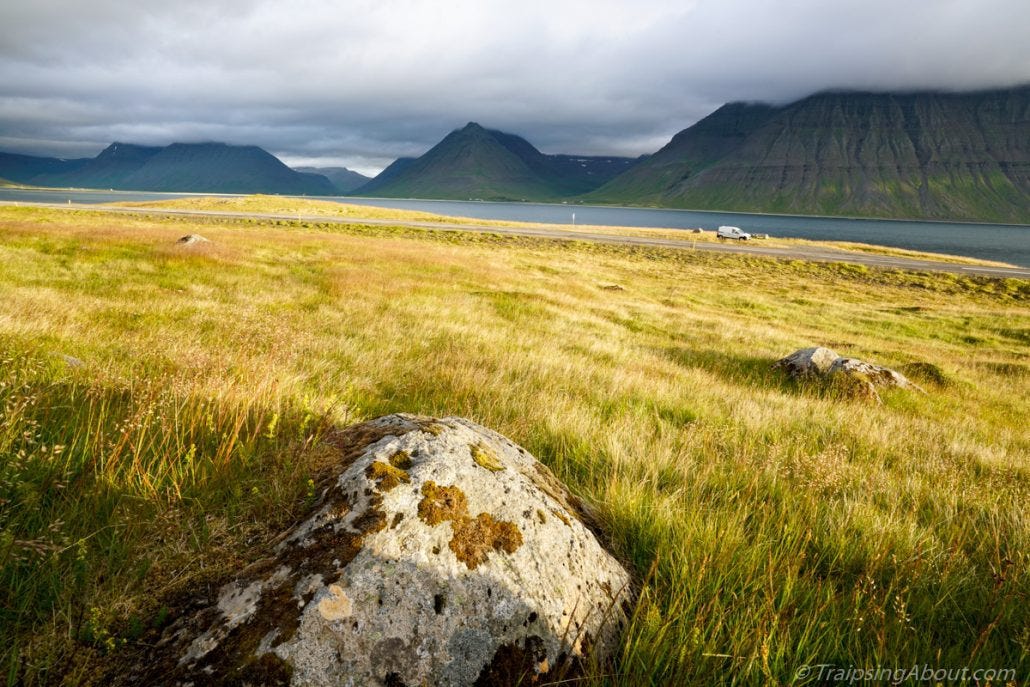
I hope you're ready for sunset locations like this!

